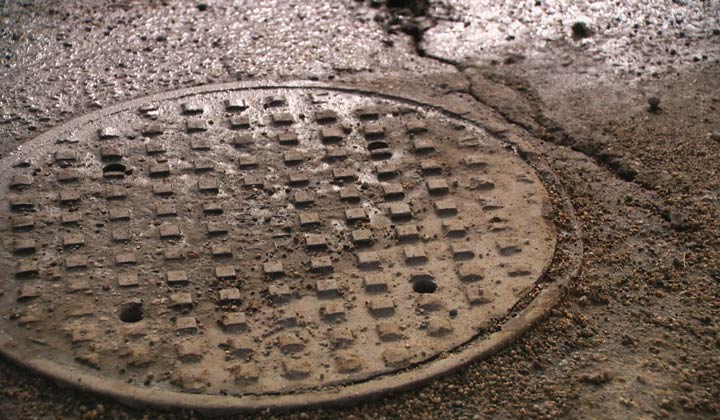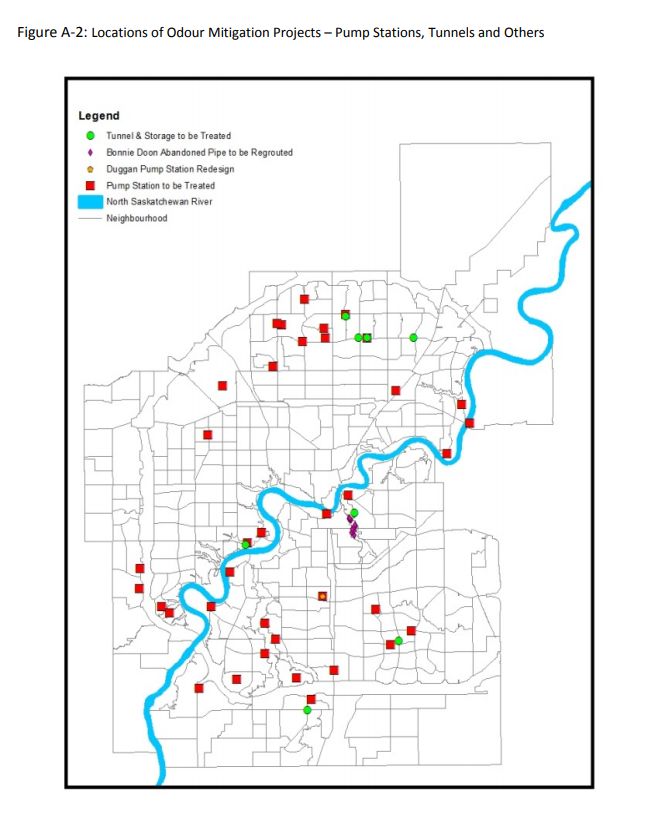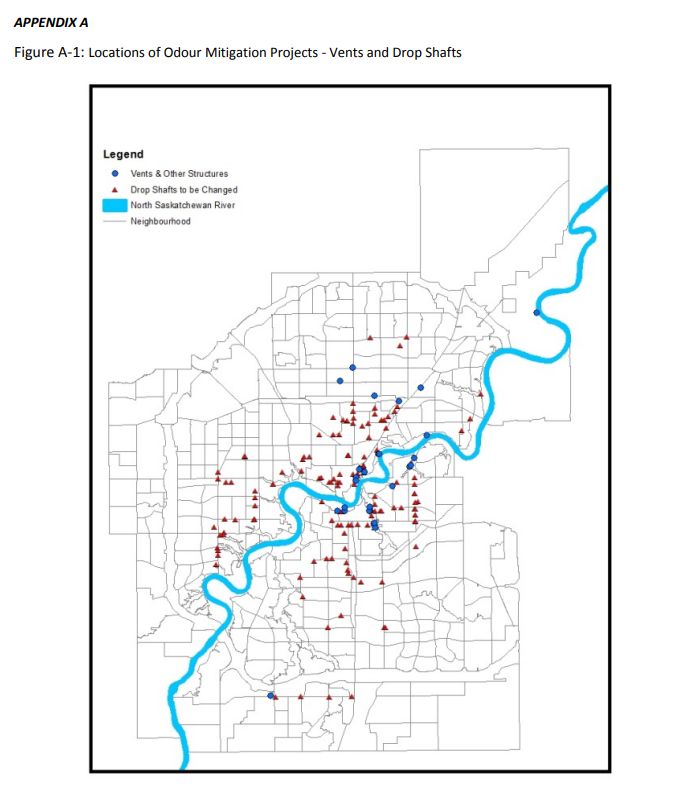City councillors are getting ready to tackle the root cause of those extremely smelly portions of Edmonton’s sewer system.

EPCOR presented council’s utility committee with two plans on Thursday that outlined what the utility company identified as eight odour “hot spots.” Four locations on each side of the river have been identified as the worst odour offenders, but the exact locations of those eight spots were not clear.
“Not being able to have enjoyable air — if we can do something about that, it is a quality of life issue,” Coun. Sarah Hamilton said.
“We have very short summers here, it’s nice to be able to enjoy your backyard and the property you own.”
READ MORE: Edmonton creating scoring system to measure sewer odour complaints
EPCOR is proposing a long-term systemic approach but also immediate work on hot spots that tend to overwhelm neighbours with stinky sewer smells.
“In London, for example, there are vent stacks along portions of their system that release the air at a higher elevation so that’s one of the options we’re looking at,” EPCOR’s Richard Brown said.

Get daily National news
To fix the problem citywide would cost about $460 million over 20 to 25 years.
READ MORE: City seeks solution for Edmonton’s stinky sewers
“I think you sort of do need to look at both but I think you need to concentrate on the hot spots first,” Coun. Andrew Knack said. “These are areas and communities that have been dealing with this for far too long.”
To get the cash to cover these repairs, utility rates would have to go up somewhere between $1.12 and $1.66 a month depending on what solution council decides on.
“For the people for whom it impacts, that’s a worthwhile investment,” Hamilton said. “For the rest of the city, that remains to be seen. We’re going to get a business case back from EPCOR. We’ll hear more on that.”
Councillors will hear more about this potential project in the spring.
WATCH: Why EPCOR has workers who sniff Edmonton’s water
“There’s these interim fixes — the scrubbers, the different things — that will help, but the actual fix, even if we approve something in the second quarter of next year, the question is how quickly do you get through all those hot spots?” Knack asked. “Do you do them all in three to five years? In 10 years?
“It’s really frustrating for some of these communities to not be able to enjoy their backyards. Again, it’s not a constant, 24-hour-a-day, but it’s enough it becomes a significant quality of life issue.”












Comments